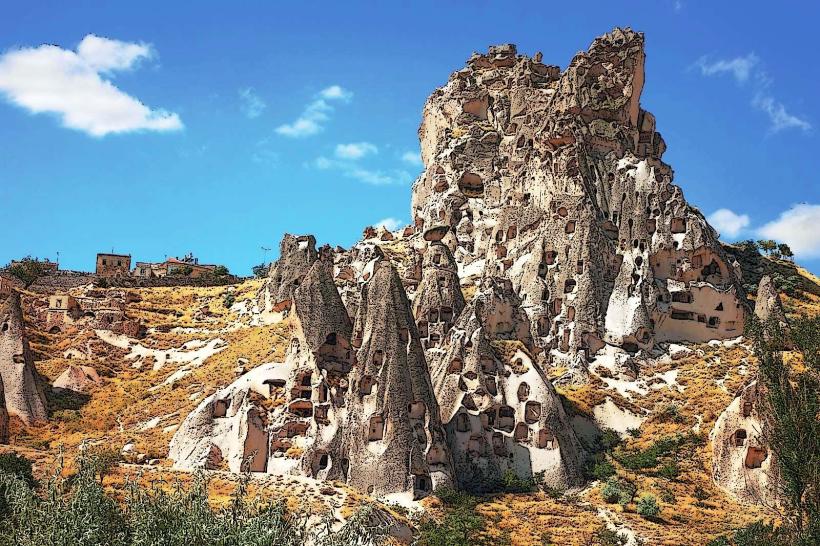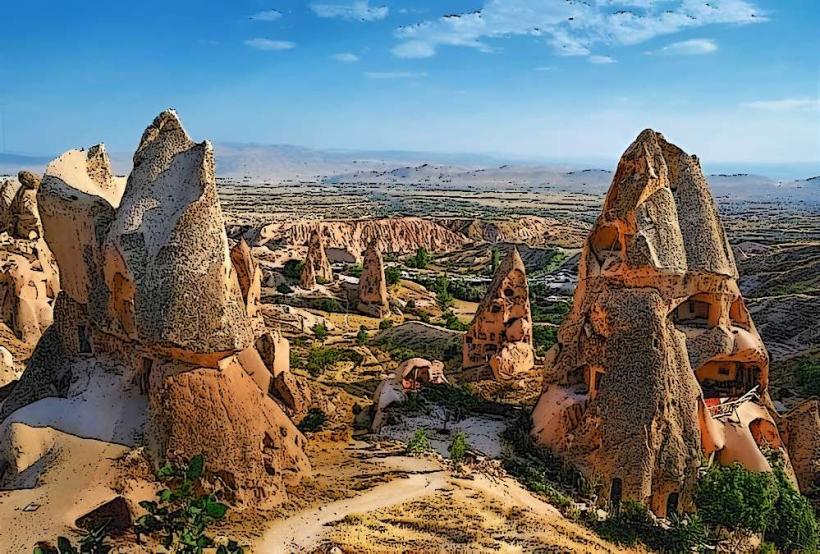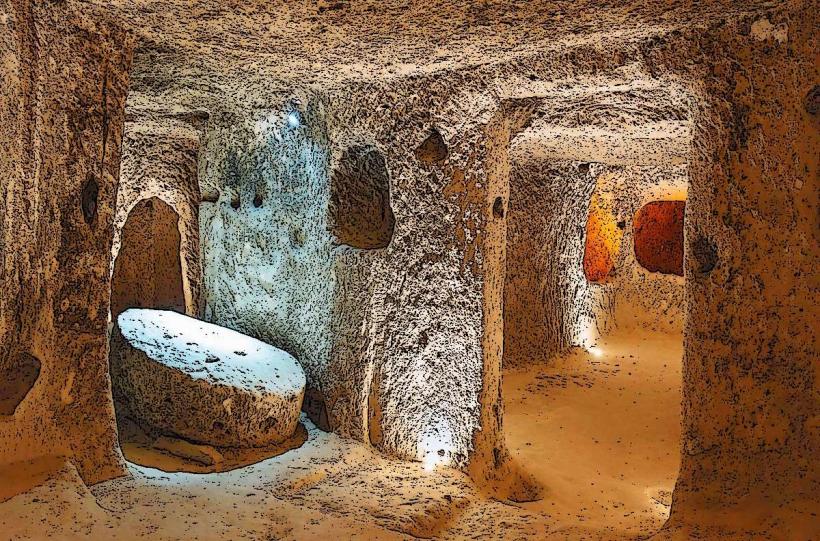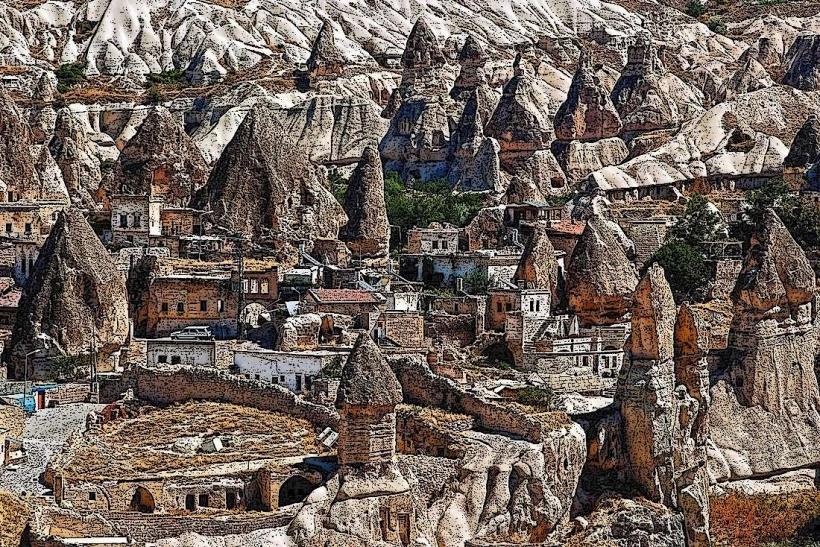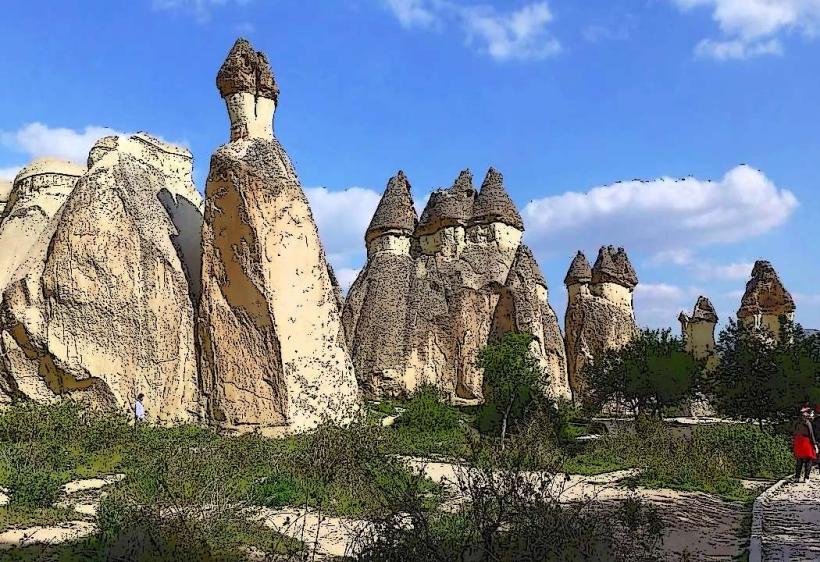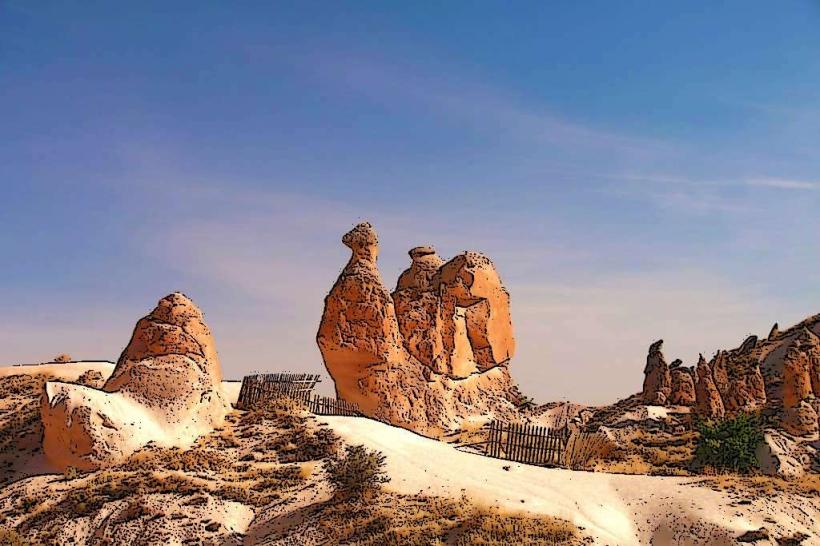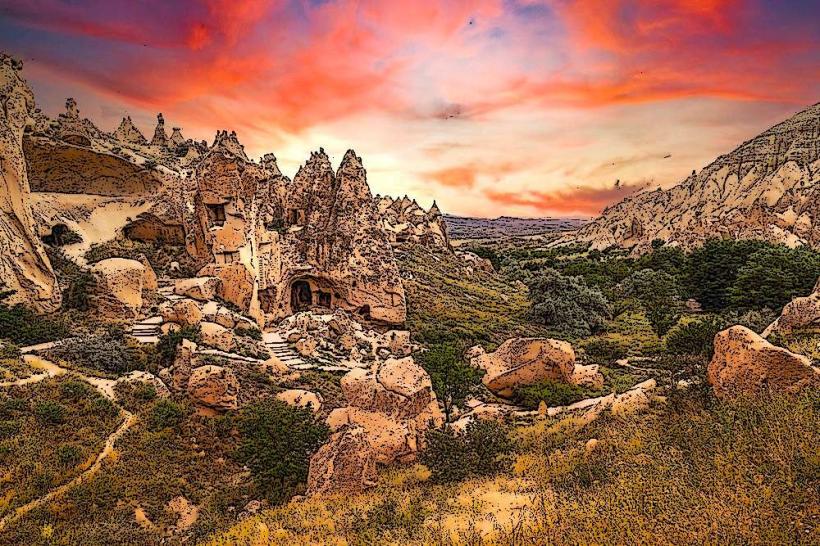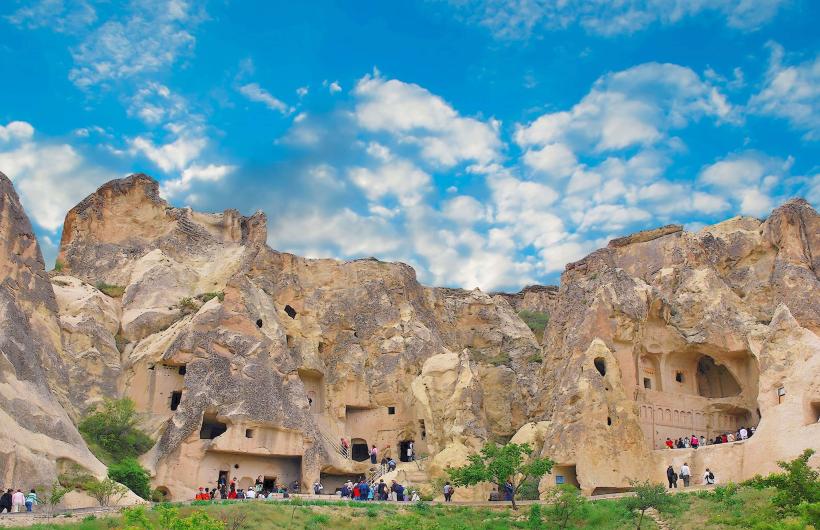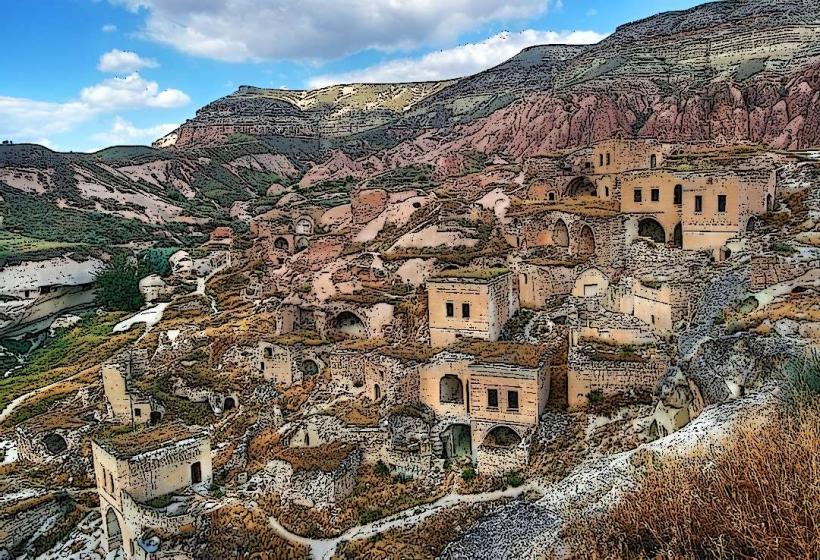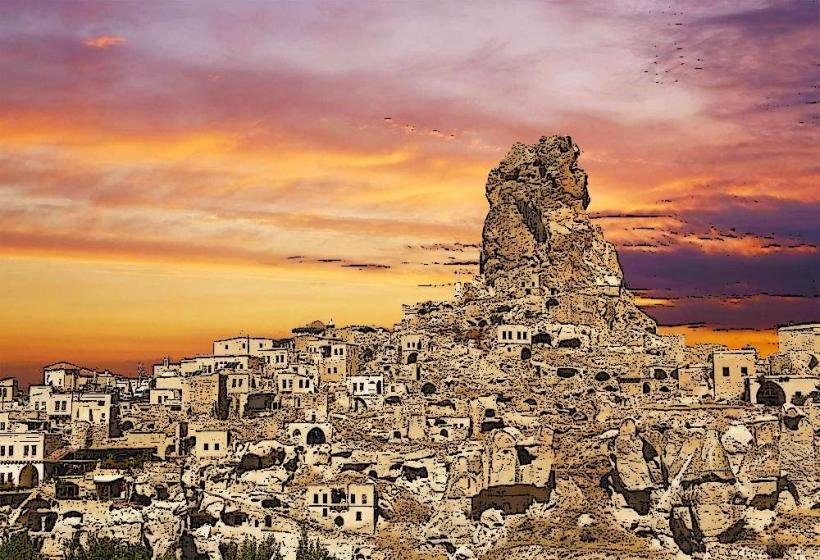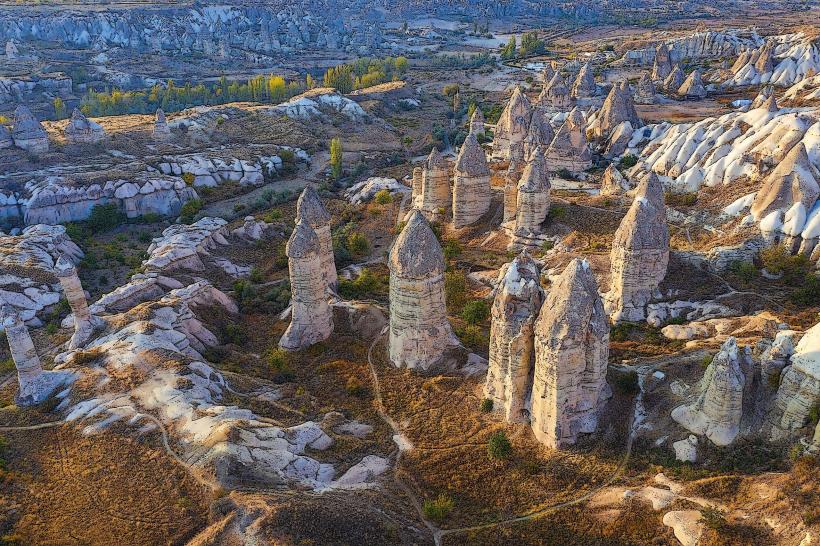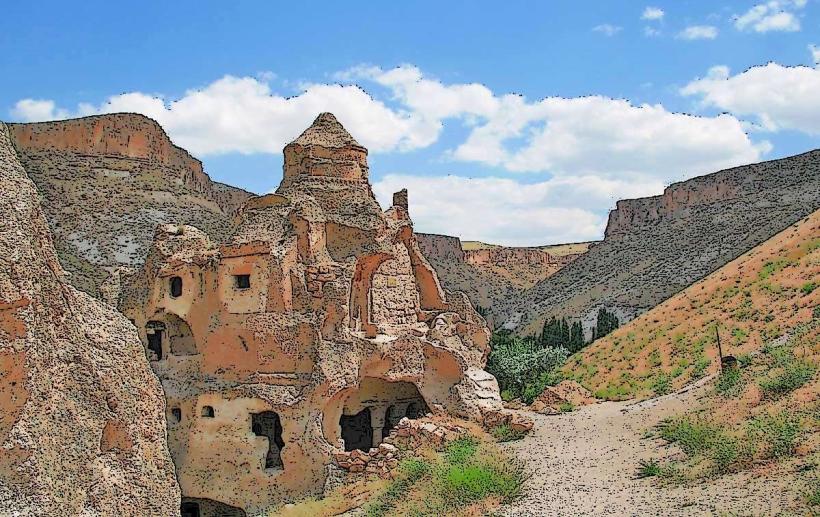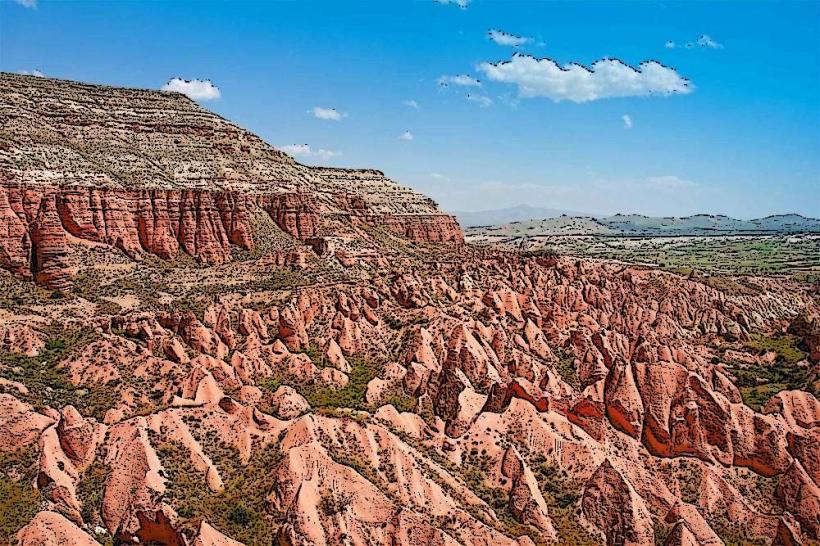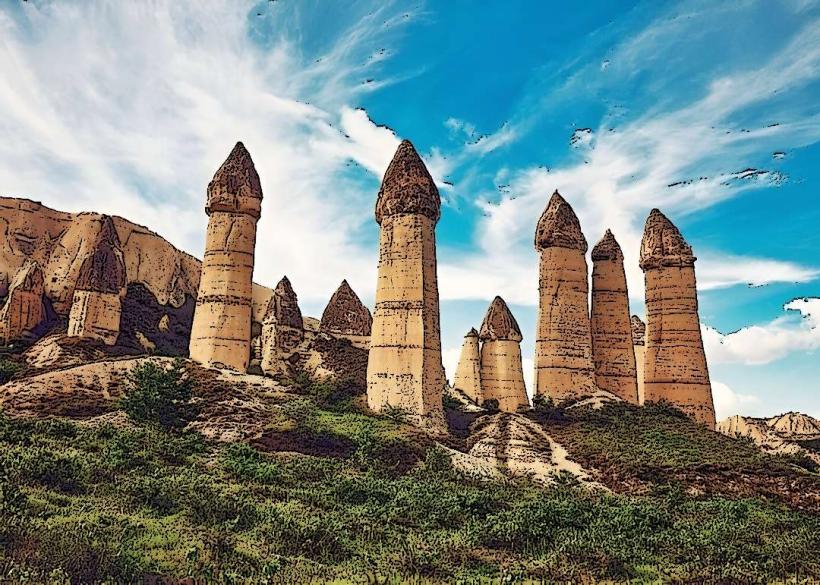Information
Landmark: Selime MonasteryCity: Cappadocia
Country: Turkey
Continent: Asia
Selime Monastery, Cappadocia, Turkey, Asia
Overview
In central Turkey’s Cappadocia region, Selime Monastery rises from the rock like a fortress, making it one of the area’s most striking and unforgettable historical sites, to boot at the edge of Ihlara Valley, the monastery sits carved straight into the shadowy volcanic cliffs, a striking showcase of rock-hewn architecture.This ancient monastery complex gives you a window into the region’s Christian past and reveals the skill and imagination of early Byzantine builders, from hand-carved stone arches to walls that still catch the morning light, as well as selime Monastery, carved into the rock by early Christian monks during the Byzantine era, still holds whispers of an older past, with a few weathered arches thought to predate that time.Historians believe it once served as both a religious hub and a monastic community, where monks lived and prayed in chambers carved deep into Cappadocia’s soft volcanic rock, furthermore the monastery stands out for its sheer size and intricate layout, with winding halls that make it one of the largest and most striking in the region.Selime Monastery rises in tiers inside a massive rock face, its chambers and passageways carved deep into the stone, after that the monastery holds churches and chapels, along with simple living quarters and a few dim, cool storage rooms.All of these structures were carved from soft volcanic tuff, a rock you could scrape with a simple chisel but that slowly hardened until it felt like solid stone, alternatively the complex circles a central courtyard, with separate sections that once served different purposes-storage rooms on one side, living quarters on the other, sort of The monastery sprawls across the hillside, and as you wander its stone corridors, you start to feel the vast scale and intricate rhythm of early Christian monastic life, as well as at the heart of the monastery stand several churches and chapels carved into the rock, their walls still bearing faded frescoes and scraps of worn religious art.These frescoes show Christian icons, vivid Biblical scenes, and solemn saints, offering a glimpse into the rituals and devotions people once held dear, along with the monastery’s main church towers above you, its ceiling soaring high overhead while cool stone columns line the aisle.As it happens, Light and shadow play dramatically in these spaces, especially when a thin beam of sunlight slips through a gap in the rock, while the monastery complex also holds living quarters and tiny monastic cells, where monks once lived, prayed, and studied by the glow of a single oil lamp.These rooms, cut straight into the rock, are plain and practical, offering a brief behold at the stark, disciplined life the monks once led here, while in some spots, you can still spot alcoves and stone benches carved right into the rock, once used for sitting, sharing a meal, or whispering a prayer.One of Selime Monastery’s most striking sights is its cathedral, hewn straight from the pale volcanic rock in the distinctive style of Cappadocia’s Christian past, along with sunlight spills across the cathedral’s wide, open hall, its vaulted ceilings arching high overhead and filling the air with a quiet, majestic calm perfect for worship and reflection.Strategic Location: Selime Monastery sits in a striking spot, perched high above the valley where the wind whistles through the rocks, in conjunction with the complex rises above the Ihlara Valley, looking out over Cappadocia’s sweeping cliffs and dusty, sunlit plains, sort of The valley’s famous for its rugged beauty, with stone-carved churches and homes tucked into the cliffs like swallows’ nests, on top of that perched high on a hill, the monastery gave the monks a sweeping view of the countryside, where they could spot travelers on the dusty road long before they arrived-a vantage point perfect for both guarding against threats and welcoming pilgrims.From the monastery, you can take in sweeping views of Ihlara Valley, where sheer cliffs rise above rugged hills and the wind carries the scent of dry earth, moreover the site feels like a quiet retreat, where you can wander cobblestone paths, slip into the past, and reflect on the region’s history and the people who once called it home.After wandering through Selime Monastery, head over to Ihlara Valley and follow the winding path along the cool, shaded river, likewise the valley’s known for hiking paths that trace the Melendiz River, where you can spot rock-cut churches and faded frescoes painted high on the sunlit walls.The valley bursts with deep green foliage, offering a peaceful venue to stroll along winding paths, spread out a picnic blanket, or snap a photo of sunlight filtering through the leaves, alternatively photography: With its intricate stone arches and cliffside perch, the monastery makes a stunning subject for any photographer, for the most part Photograph the rock-cut churches and their fading frescoes, with the valley’s cliffs rising sharply in the background, in turn take a stroll through the tiny village by the monastery, where you might hear roosters crowing and glimpse daily life unfolding in the heart of rural Cappadocia.Browse stalls filled with handwoven scarves and carved wooden trinkets, then sit down to taste regional dishes at a cozy local restaurant, not only that loved Selime Monastery?, generally Take a short trip to behold more of Cappadocia’s rock-hewn treasures, from the cave churches of Göreme National Park to the honeycombed cliffs of Zelve and the quiet chapels scattered through Soğanlı Valley, as well as many of these sites feature rock-cut chambers and faded frescoes, giving a closer glimpse into the region’s Christian past.The best time to notice Selime Monastery is in spring, from April to June, or in autumn, between September and November, when the air feels crisp and the light turns the stone walls a warm gold, equally important these seasons bring mild, pleasant weather-the kind that invites you to lace up your boots and wander the pine-scented trails around the area.Summer gets blazing, so plan your trip for early morning or later in the afternoon, when the air’s still cool enough to feel the dew on the grass, as well as in the end, Selime Monastery stands as a stunning glimpse into Cappadocia’s rich past, its stone halls and carved facades telling stories centuries vintage.Perched high above the Ihlara Valley, the monastery’s carved stone halls and faded frescoes offer a vivid window into the daily lives of early Christian monks and the deep history of the region, then whether you’re drawn to ancient history, striking stone arches, or the sight of sunlight spilling over Cappadocia’s cliffs, you shouldn’t miss Selime Monastery.
Author: Tourist Landmarks
Date: 2025-09-22

